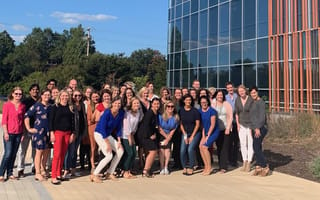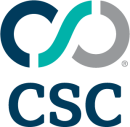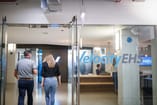
Sharp insight can come from the most unexpected places.
Saum Mathur, the chief product and technology officer of Chicago-based fintech company Paro, had what he considered a groundbreaking business idea. That was, until observations made by his teenage daughter turned it inside out in two hours flat. Although her generation was his intended target audience, her consumer values were vastly different than Mathur anticipated. Mathur learned a big lesson that day: diverse insights are crucial for viable business models.
While mentorship can bridge DEI gaps in the workplace, it is not a one-way street. Reverse mentoring, or pairing a younger person with someone older to share expertise, is a mutually beneficial practice that allows employers to maximize the potential of a multigenerational workforce. Tapping into the strengths of different generations promotes skill development across the board and results in a well-rounded team.
Tech companies that lean into generational diversity now have a distinct competitive advantage as the workforce becomes more age-diverse. Built In’s 2021 The State of DEI in Tech report found that people over 56 years old made up less than 25 percent of the organization in every company surveyed. Meanwhile, the proportion of the population over 60 is expected to grow to 22 percent by 2050, according to the World Health Organization.
Mentorship and skills development are just a few ways tech companies can augment age-diversity in their organizations. These two Chicago-based fintech companies explain how they’ve used these tools, and more, to tackle ageism in tech.
Paro pairs freelance finance professionals with companies for on-demand financial expertise. Chief Product and Technology Officer Saum Mathur credits a multigenerational workforce for keeping well-rounded perspectives.
Tell us about a specific time when having a multigenerational workforce made your team stronger or improved the outcome of a project.
I worked for an electronics manufacturer where most of the workforce was very tenured. As newer technologies emerged, we found the purchasing behavior of the new generation of consumers was very different from what the tenured workforce was used to delivering.
We changed our recruitment strategy to hire a lot of early-career employees and started a program of reverse mentoring, where the early career employees mentored older generations in how the younger demographics behaved.
I invited the early-tenure employees to participate in annual strategy sessions, which were traditionally limited to senior executives. As a result, the product strategies were better, as they were designed to resonate with the new generation of consumers.
How do you work to leverage the unique strengths and skill sets of different generations within your workforce?
Each generation brings its own strength. Older employees bring a wealth of experience based on what has worked for them and has not. Furthermore, while technology is evolving quickly, many principles and concepts haven’t changed. So, older employees can bring the wisdom of applying the concepts and principles, even if the actual implementation of the new technology is different.
On the other hand, the younger generation has the knowledge of the latest technologies and the values of their generation to bear on the product design. Their unbridled enthusiasm and energy is a boon to multigenerational teams.
Companies that lean heavily toward a younger workforce end up reinventing the wheel, while companies leaning toward an older workforce tend to be slow market movers.
Ensure that the focus groups for consumer studies are diverse in every way possible.’’
What steps have you taken to understand and cater to the diverse needs of a multigenerational workforce?
Most of the leaders in my generation ignore the best coaches that are available to them: their own children.
Once I was working on a project that I thought was industry leading and would change the way businesses interact with their customers. I happened to bring this project up with my teenage daughter. In the next two hours, she had shaken my confidence in the viability of the project. I learned a lot about how her generation, which would be the target audience, really buys from businesses and what they value. What I learned was vastly different from the requirements that were written by someone who was from a different generation.
Lesson learned: Ensure that the focus groups for consumer studies are diverse in every way possible!
CSC Corptax, a software development company providing corporate tax solutions, made Built In’s list of 100 Best Midsize Companies to Work for in Chicago 2021. Human Resources Generalist Chelsey Cochran believes that pairing older and younger workers together on projects has paid off.
Tell us about a specific time when having a multigenerational workforce made your team stronger or improved the outcome of a project.
We believe opportunities for learning and career growth are ageless. An individual with more tenure can act as a mentor and leader, while someone early in their career can bring experience with newer technologies to the table.
When the Tax Cuts and Jobs Act of 2017 legislation hit, it brought rapid changes to corporate tax. We had to quickly address those changes and deliver for our customers. We brought on a seasoned tax change expert who worked hand-in-hand with our junior technical communications team to craft the messaging and get it out to customers.
We believe opportunities for learning and career growth are ageless.
How do you work to leverage the unique strengths and skill sets of different generations within your workforce?
Last year’s shift to our very first virtual users’ conference illustrated how our multigenerational teams innovated together to pull off a successful event. Our team members’ different levels of experience and their diverse perspectives allowed us to fully address our customers’ needs in a totally new environment.
Every generation contributed: a younger team member led website creation for the conference, while experienced team members planned and executed it, incorporating great ideas from everyone.
Having everyone’s skills focused on the same goal was key to the event’s success. Associates took on roles outside of their normal work scope to contribute to the seven-day virtual conference, which garnered 4 percent higher attendance rates than our last in-person conference. Most importantly, we received positive feedback from our customers.
What steps have you taken to understand and cater to the diverse needs of a multigenerational workforce?
Since we’ve gone remote, we’ve focused on engaging with all employees. We offer something for everyone, including bingo and trivia nights — and we’ve continued to celebrate birthdays and work anniversaries.
Acting on employee feedback also helps us meet the needs of our multigenerational workforce. It enables us to create a culture that supports everyone, and it ties into our value of “Being Genuine.”
We want our employees, wherever they are in their careers, to feel that our perks and benefits support them as they grow within CSC Corptax — whether that’s tuition reimbursement, mentorship opportunities, or 6 percent 401(k) matching for retirement. And while some employees will return to our offices when it’s safe to do so, remote work and flexibility will always be key for us. We’ll continue to enhance our benefits to foster connection and inclusion.










